Guest Post by Chris MacIntosh

Too many times in the past have I seen covers like this… and a few years later it didn’t turn out too bullish!

We covered magazine covers before as a great way to gauge “market zeitgeist.” It will be a while before we see offshore oil and gas, coal, or uranium hailed as a worthwhile investment on these covers. And when it happens, that’s when you’ll know it might be a good time to offload our positions. In other words, there’s still a lot of upside available in the hated sectors we focus on here at Insider.
Offshore Juice
Coming back to the offshore oil and gas theme…
Oil Majors Set To Sanction $125 Billion Upstream Projects in 2024
International oil and gas majors and the Middle East’s national oil companies are expected to give the green light this year to up to 30 projects, worth a total investment of $125 billion and holding an estimated 14 billion barrels of oil equivalent (boe) of resources.
That’s the estimate in Wood Mackenzie’s latest analysis of upstream oil and gas projects expected to reach final investment decisions (FIDs) in 2024.
And who stands to gain by all this spend? Oil and gas service companies — still the world’s worst performing sector over the last 10 years and still down some 80% from the start of 2012.
Philadelphia Oil and Gas Equipment and Services Index relative to S&P 500 indexed
Australia: Lights Out or Diesel?
This is Hegelian dialectic (an interpretive method in which the contradiction between a proposition and its antithesis is resolved at a higher level of truth) at play in the land down under.

Let the lights go out (let our standard of living go backwards) or burn diesel (maintain our standard of living)? You guessed it…
Gas generators may be forced to burn diesel to keep the power grid running after authorities warned that states face a catastrophic supply shortfall from next year unless new sources of supply are developed.
The Australian Energy Market Operator revealed that gas generators could have to run on diesel through to 2026 during periods of high demand, due to the lack of gas on the east coast.
Goodness knows what they will switch to as coal-fired power stations are retired:
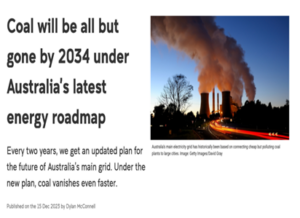
It should be blindingly obvious, even to mask wearers, that this is a delusional road map. What most (even those who recognise this as delusional) don’t understand is that this is part of the Great Reset and entirely intentional. You see, it’s far more difficult to force a middle class into enslavement (they’ve relative power en masse), and so you need to first impoverish them before offering a “solution” that would otherwise be unpalatable.
A Bullish Build Up in Metals
Something bullish is building in the metals market.
Take a look at the LMEX (the London Metal Exchange Index of six base metals). It essentially went nowhere for a couple of years, but now, it looks like it’s starting to move.
The Invesco DB Base Metals Fund ETF (DBB) does a good job tracking the base metals market.
LMEX Index vs DBB ETF indexed to 100
And one other thing… Let’s take a look at the CRB Metals Index (copper scrap, lead scrap, steel scrap, tin, and zinc) and the CRB Raw Industrials Index (burlap, copper scrap, cotton, hides, lead scrap, print cloth, rosin, rubber, steel scrap, tallow, tin, wool tops, and zinc). Look at how volatility has “dropped to zero” over the last eight months. Drops in volatility generally precede a change in trend.
The Declining Productivity of Shale
I have a suspicion that we talked about the article below late last year. If we have, then a bit of repetition won’t hurt. And if we haven’t, then take note.
One of the big fundamental reasons as to why we believe the oil price will move higher over the coming months and years is a failure of US shale production to live up to expectations of increasing output. Remember, US shale production has accounted for about 75% of the increase in global oil production over the last 15 or so years.
Evidence seems to be gathering that US shale production is encountering productivity issues.
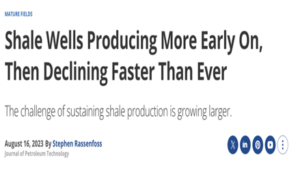
From the article:
Production from the average US shale oil well is declining more rapidly every year, with the biggest losses by far in the Delaware Basin, according to a report from Enverus.
Increasing rapid declines by many thousands of older wells are obscured by the rise in total production from new wells as the industry engineers completions to maximize early production.
On a chart comparing average decline curves by year, each year begins higher and plunges at a steeper rate than the previous year.
“The US shale industry has been massively successful, roughly doubling the production out of the average oil well over the last decade, but that trend has slowed in recent years,” said Dane Gregoris, report author and managing director at Enverus Intelligence Research.
The production decline rate has grown steeper at a rate of more than 0.5% annually since 2010, the report said.
“We’ve observed that decline curves, meaning the rate at which production falls over time, are getting steeper as well density increases. Summed up, the industry’s treadmill is speeding up and this will make production growth more difficult than it was in the past,” Gregoris said.
The steepest declines are seen the Permian’s Delaware Basin, where the annual drop is nearly triple the 0.4% rate in the Midland Basin.
The report predicts declines will continue to accelerate because every well added within a section significantly steepens the decline rate for wells in that area.
The fact that new wells produce less than older ones is not a surprise. Historically, infill wells are less productive than the initial ones.
But if the decline curves on these already short-lived wells gets steeper, that will magnify the challenge of drilling and fracturing enough wells to deliver on predictions of continued growth.
More-intensive fracturing and tighter spacing can maximize the initial rate of production which represents much of the ultimate production of these short-lived wells.
After years of intensive development, the vast majority of the wells drilled now are near older ones that have depleted the surrounding reservoir, reducing the production from new wells.
I think the last sentence is rather telling!
We continue to believe that there will be negative productivity surprises coming from US shale and the Permian in particular. This is likely to put upward pressure on the oil price. All we gotta do is be patient.
Thinking on Energy Markets
Sometimes you come across a podcast that takes the words right out of your mouth.

Chickens Coming Home to Roost in Australia
Remember when we discussed this a few months back?

Well, now them chickens are comin’ home to roost. The cliff that the “Net Zero” ideology is pushing Australia towards (if it isn’t already half over). Here’s The Australian):
A looming gas shortfall that threatens to curtail industries and derail Australia’s energy transition is the fault of 10 successive government interventions, the Gina Rinehart-backed Senex Energy has declared, and now the country has little time left to fix the mess.
Australia faces a looming gas shortage which could emerge as soon as next winter, and while there are marginal supply boosts that can be implemented, authorities said the chasm would be impossible to bridge by 2028 without urgent new supplies.
Should new supplies not be brought online, large industries that rely on gas are likely to face a battle for survival and Australia’s energy transition away from coal could be scuppered.
Senex Energy, half-owned by mining billionaire Gina Rinehart, said the difficulties were a direct consequence of governments intervening to pick winners – though there is now a gradual acceptance that gas is vital and will be required for decades to come.
Chief executive Ian Davies said Labor and its state counterparts would need to show “unambiguous and unequivocal support” for gas.
“Something needs to change – and quickly – before the warning bells turn to a death knell for industry and lights out for households,” Mr Davies will say in an industry speech in Sydney on Tuesday. “Unrelenting gas market intervention has created this mess and it’s time for effective energy policy to get us out.”
All rather miserable if you are so fortunate to live in Aussie. However, that aside, this highlights one huge issue. Once you realise you have an energy crisis, you can’t just “turn on the taps” because the crisis is a result of the “reservoirs upon which the taps are attached running dry.” It takes time and considerable money to develop new reservoirs. This applies not only to natural gas but coal, uranium, oil, copper, and the like.
Yes, money will be thrown at developing new resources with gay abandon. Economics and greed (the desire for a better standard of living) will always win over the prevailing Malthusian ideology gripping the West. But by the time that happens, stock prices of service and producer companies will have lost their asymmetry (i.e. they will have rocketed higher).
The most value still sits with small cap oil and gas service and producer stocks.
The SPDR S&P Oil & Gas Equipment & Services ETF (in white), small cap oil and gas sector (in yellow), and large cap oil and gas producers (in green) indexed to 100
But it isn’t easy. Remember MMA Offshore? We first talked about it in mid-2020 when MMA was trading at about AU$0.30-0.50 (actually, it was 3-5 cents before the stock consolidation). We were bullish for all the same reasons we were bullish on Tidewater. Well, blow me down — any genius who followed our idea took about two years to get back to break even (if they were patient enough), and at one stage were down 30-50% even after 18 months of being in the trade. The rest, as they say, is history.
And now? Well, as they say in Aussie, “buggar my days.” That elusive 10x return gets pulled from beneath our feet yet again.

Ah, well — a 4x return is better than a poke in the eye with a burnt stick. We take our chips and move on.
Editor’s Note: The Western system is undergoing substantial changes, and the signs of moral decay, corruption, and increasing debt are impossible to ignore. With the Great Reset in motion, the United Nations, World Economic Forum, IMF, WHO, World Bank, and Davos man are all promoting a unified agenda that will affect us all.
To get ahead of the chaos, download our free PDF report “Clash of the Systems: Thoughts on Investing at a Unique Point in Time” by clicking here.
It is my sincere desire to provide readers of this site with the best unbiased information available, and a forum where it can be discussed openly, as our Founders intended. But it is not easy nor inexpensive to do so, especially when those who wish to prevent us from making the truth known, attack us without mercy on all fronts on a daily basis. So each time you visit the site, I would ask that you consider the value that you receive and have received from The Burning Platform and the community of which you are a vital part. I can't do it all alone, and I need your help and support to keep it alive. Please consider contributing an amount commensurate to the value that you receive from this site and community, or even by becoming a sustaining supporter through periodic contributions. [Burning Platform LLC - PO Box 1520 Kulpsville, PA 19443] or Paypal
-----------------------------------------------------
To donate via Stripe, click here.
-----------------------------------------------------
Use promo code ILMF2, and save up to 66% on all MyPillow purchases. (The Burning Platform benefits when you use this promo code.)


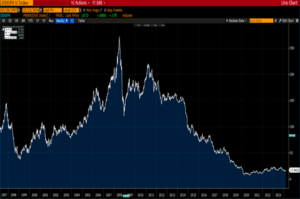
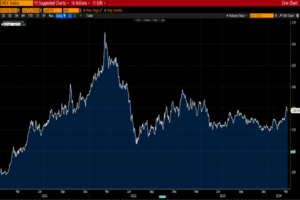
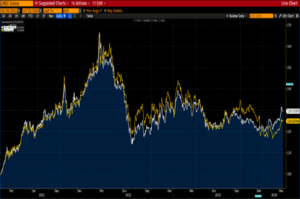
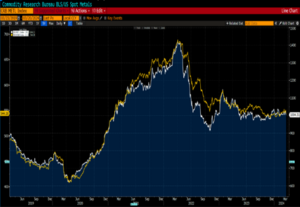

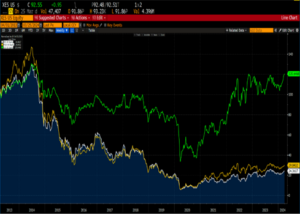
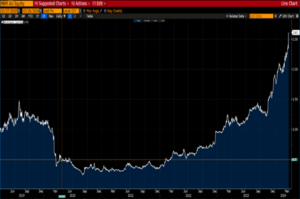



CFR , Foreign Affairs and The Economist covers too.
There i fixed it.
“When a well-packaged web of lies has been sold gradually to the masses over generations, the truth will seem utterly preposterous and its speaker a
raving lunatic.”
– Dresden James
So a 65-70 IQ aboriginal is shutting down the system, so to speak.
Amazing.